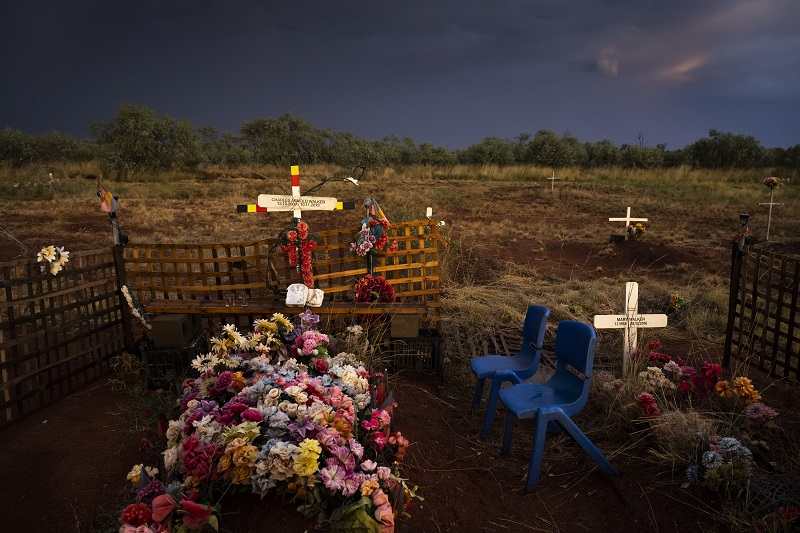
The gravesite of Kumanjayi Walker in Yuendumu on March 24.
16:42 JST, May 13, 2022
YUENDUMU, Australia – The cemetery sits on the edge of town, past a rusty red sign that points the way like an old-fashioned advertisement.
It was here, where the summer storms sweep in from the desert, that Kumanjayi Walker’s family members were gathered when they learned he’d been shot.
They had come for the funeral of another relative. But when they raced back to town and saw the blood where police officers had dragged the 19-year-old from his home, they realized they would be burying him, too.
Prosecutors made the rare decision to charge one of the White officers with murder in the death of the Aboriginal teen. And for more than two years, prosecution of the case gripped a country still reckoning with its colonial past.
But the March verdict has unleashed another type of reckoning. Instead of Australia’s first conviction of a police officer for the murder of an Indigenous person, the jury delivered an acquittal. And despite additional allegations of misconduct, the officer and his supporters are now on the offensive, successfully demanding an inquiry into the decision to charge him in the first place.
The outcome struck many in Yuendumu as doubly cruel. At times, the trial and the media coverage seemed to focus more on the mistakes of the troubled teen than the officer who killed him. And for the local Warlpiri people, the verdict cut against cultural ideas of justice.
But above all, it seemed to many here in the heart of Australia that history was repeating itself.
That’s because beyond the cemetery, down a road some Warlpiri avoid traveling, lies another graveyard, where there are no crosses – only scattered skeletons.
It’s the site of Australia’s last known massacre, in which another White soldier-turned-policeman led deadly attacks on Aboriginal people, only to be cleared of wrongdoing.
Almost a century separates Walker’s 2019 killing and the 1928 massacre. But for the people of Yuendumu, the echoes expose how little has changed.
“It’s always been us and them,” said Dennis Nelson, Walker’s great-uncle, who, like many in Yuendumu, grew up hearing stories of the killings. “That massacre was ‘justified,’ too.”
– – –
Two hundred miles of desert lies between Yuendumu and the nearest city. In some places, the highway that connects them is nothing more than a single-lane dirt road, dominated by giant trucks known as road trains. Even when paved, it’s often blanketed in smoke from bush fires or submerged by floods.
The massacre site is more remote still. On an afternoon in late March, two Warlpiri elders agreed to take a Washington Post reporter, guiding the way over dry creek beds and past herds of dusty cattle.
The site, known to the Warlpiri as Yurrkuru, is easy to miss. Only a small plaque in the scrubland commemorates the dozens of Aboriginal people who were slaughtered here. For more than 70 years, the sole hint of what is commonly called the Coniston Massacre, after a nearby cattle station, was the grave of Fred Brooks, the White dingo trapper whose killing by an Aboriginal man sparked the reprisals.
For the Warlpiri and other tribes whose ancestors were killed or scattered, however, the event has been recounted from one generation to the next, as if it had just occurred.
“In the evening, when everything is quiet, you can hear it,” said Ned Hargraves, one of the elders, as he sat next to a fire at the site, cooking kangaroo tails. “The sound of people screaming, running, kids crying.”
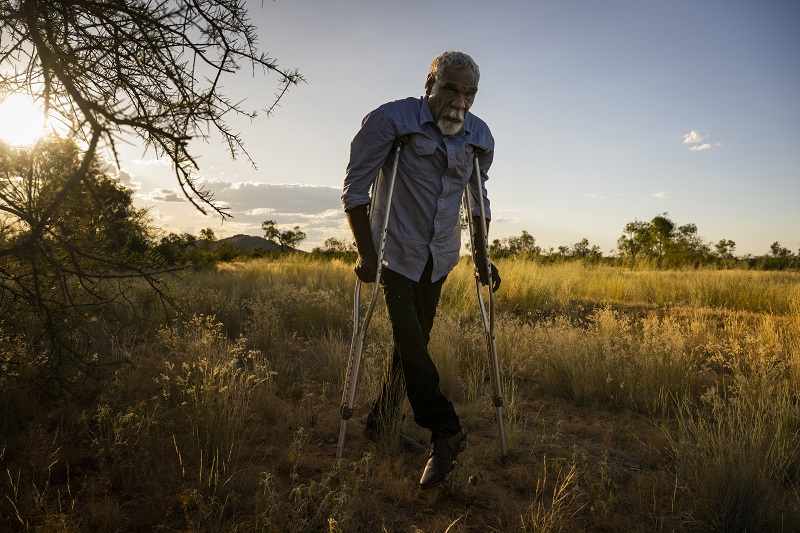
Ned Hargraves, a Warlpiri elder, at what the Indigenous people call Yurrkuru: the site of the Coniston Massacre.
The massacre, which was led by a World War I veteran and Northern Territory policeman named William George Murray, has shaped how generations in Yuendumu and other remote Aboriginal communities in the region view the authorities.
“A ruthless man, shooting innocent people,” said Simon Fisher, an elder who has studied the massacre. “He was acquitted. . . . How could that be?”
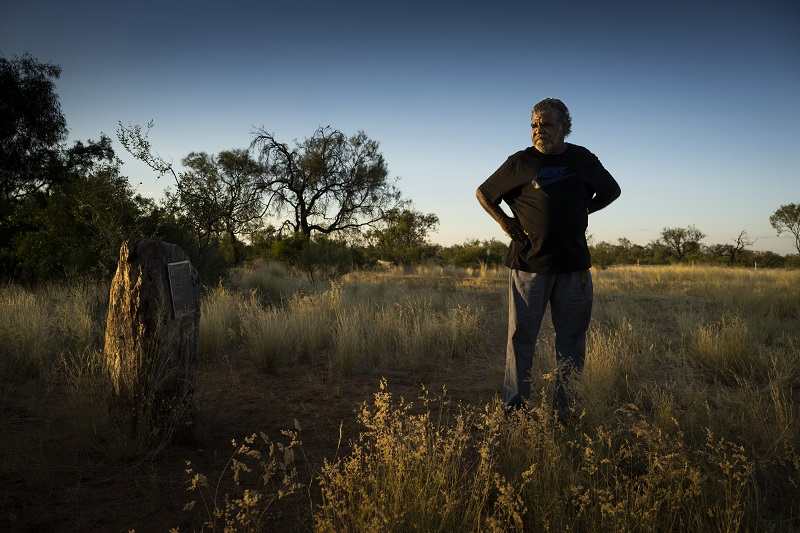
Simon Fisher looks at a plaque at the site of the Coniston Massacre, a state-sanctioned killing of Aboriginal people in the Northern Territory in 1928.
In Yuendumu, that same question now surrounds the killing of Kumanjayi Walker.
Many Aboriginal people, in the Northern Territory and across the country, saw the trial as a test of how far Australia’s criminal justice system had evolved over the past century.
But when the proceedings began in February at the territory’s Supreme Court building in Darwin, where visitors walk over a Warlpiri mosaic as the portraits of White justices peer down from above, there was no mention of the Coniston Massacre. There was barely any mention that Walker was Aboriginal.
Instead, the judge imposed sharp limits on what prosecutors could present in court. He barred mention of allegations that the officer, Zachary Rolfe, had been violent during the arrests of four other Aboriginal men or boys, who required medical treatment in the two years before Walker’s death, or claims that he had falsified police reports after three of the incidents and asked another officer to scratch him to incriminate an Aboriginal person they had arrested. (Rolfe declined, through a lawyer, to be interviewed. He has not been charged over the allegations.)
The jury also was kept from seeing text messages Rolfe had sent to an army buddy, saying Central Australia was “like the Wild West,” where he got to do “cowboy stuff with no rules.”
Without that evidence, the trial came down to whether the jury believed Rolfe had feared for his or his partner’s life on Nov. 9, 2019, when he shot Walker three times in the torso, moments after the teenager had stabbed him in the shoulder with a small pair of scissors.
Rolfe’s attorney described Walker, who had brandished an ax at officers a few days before his death, as “the author of his own misfortune.”
“Let’s be brutally frank about this young man,” David Edwardson told the jury. “The truth of the matter is that he had a lengthy and violent criminal record.”
But to Hargraves, who had initiated Walker in Warlpiri ceremonies, he was more than a young man with a long rap sheet.
His short life had been shaped by hardship. His mother drank alcohol while pregnant, relatives told The Post. That had left the young Arnold, as he was known while alive, impulsive and unable to understand the consequences of his actions.
“He was not able to learn from his mistakes, so he basically functioned in survival mode,” said Kerri-Anne Chilvers, a trauma specialist who knew Walker well. At 19, she said, he had the self-restraint of someone half that age. Sometimes, Walker would get so overwhelmed that he would curl up in a ball. If feeling threatened, his response would be to fight or flee.
His mother died when he was young and his father drank himself to death a few years later, relatives said, leaving Walker in the care of family members. It was clear, Chilvers said, that the boy had witnessed domestic violence and police brutality. Once, she said, he built a sand castle with a dungeon “to put all the police in.”
Law enforcement in Yuendumu and other Aboriginal communities in the Northern Territory intensified in 2007 with a federal crackdown known as “the Intervention.” The sweeping measures, ostensibly aimed at child abuse and domestic violence, upended Aboriginal life. Armed officers, once rare in these communities, are now common. In a town of 200 aging and often overcrowded houses, the newer, multimillion-dollar police station seems to signal the government’s priorities.
(Police in Yuendumu declined to comment. When a reporter and photographer stopped by the station, they were put in a locked interview room, where the officer in charge asked them for their driver’s licenses and questioned them about their purpose in town.)
Walker’s interactions with police began as a minor when he would break into stores, his adoptive mother, Leanne Oldfield, told The Post.
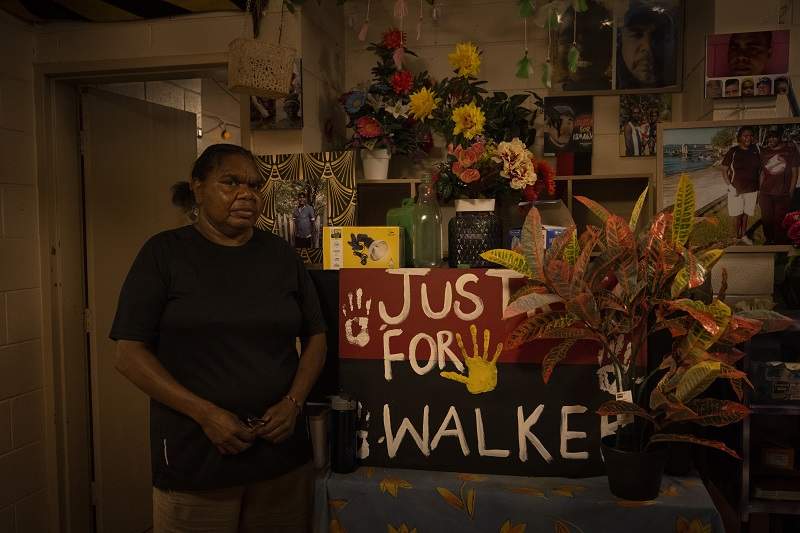
Leanne Oldfield, Kumanjayi Walker’s adoptive mother, in her home on the outskirts of Alice Springs.
“Some of the police was rough with him,” she said. Walker hated being locked up and often fled from juvenile detention, she said, only adding to his legal problems. After one escape, officers used a dog to detain the boy, said Oldfield, who visited him in the hospital as he recovered from the bites.
Joyce Brown, Oldfield’s cousin, recalled seeing police pull a half-naked Walker from his house on several occasions.
“He used to say, ‘Auntie, I don’t like these police. They are going to kill me one day,’ ” she said. Eventually, Walker was sent to Don Dale, a youth detention facility near Darwin where children have been tear-gassed, tied to restraint chairs and covered with spit hoods, according to the Australian Broadcasting Corp.
Walker never received the help he needed, Chilvers said. Instead of learning to control his impulses, he continued to lash out. Sometimes it was at the police officers who were arresting him. Other times, it was at his partner, whom Walker was convicted of assaulting as a minor. She declined to speak to The Post.
Most people in Yuendumu saw Walker as a quiet if confused young man. He would walk around town with his headphones on, listening to reggae or R&B, hopping fences to have a yarn, or chat, with relatives. At times, however, he wore out his welcome with his break-ins.
Hargraves said the teen was eager to learn about hunting and other traditions. But he seemed to have difficulty staying out of trouble and was always looking over his shoulder for the police.
“He had that fear,” Hargraves said. “He was always running.”
He was running the day he died. A few weeks earlier, he had been released from prison after serving eight months for a break-in. But when he heard that one of his relatives had died, Walker violated his parole by removing his ankle monitor and leaving his halfway house in Alice Springs to attend mourning ceremonies, known as sorry business.
When he arrived at Oldfield’s home, she said, she urged him to return to the halfway house. He agreed but disappeared before she had a chance to take him.
When she saw him again, it was at her mother’s house in Yuendumu, where the two sat outside at dusk, looking at family photos and laughing.
While Walker was inside, Oldfield saw the officers approach. Rolfe asked to search the house, and she consented.
“I thought they was just going to go in and grab him,” she said. Instead, she heard a discussion, then a scuffle, then gunshots.
Over the screams of relatives, Oldfield couldn’t hear the boy she had raised utter some of his last words.
“Leanne,” Walker called out for her. The officers handcuffed the wounded teen, put him in the back of a police vehicle and drove to the station.
– – –
Hargraves was on Yuendumu’s main street one afternoon in late March when he saw two police officers with pistols on their hips.
“They still have their guns?” he said, and cursed.
When Rolfe was acquitted on March 11, Hargraves called on police to stop wearing firearms in remote Aboriginal communities. The demand was spray-painted on highway signs all the way from Alice Springs.
The Northern Territory’s top official at the time, Chief Minister Michael Gunner, quickly dismissed the idea.
Instead, a backlash was building against the decision to charge Rolfe. It has been led by his father, a Canberra Audi dealer, and the local police union. The territory’s independent anti-corruption commissioner announced an investigation. Gunner, who denied interfering in the charging decision, announced his resignation this week.
Aboriginal rights advocates had hoped for a conviction and then reform. Now they fear that the acquittal will do the opposite: embolden police to use force against Indigenous people more often.
“With all of the evidence coming out in court about how ‘dangerous’ Kumanjayi was and how the shooting was justified, the fear is that then makes police think shooting is justified,” said Beth Wild, a lawyer with the North Australian Aboriginal Justice Agency.
Wild, like some of Walker’s relatives, hopes a coroner’s investigation this year will examine evidence that wasn’t allowed in the criminal trial.
But others in Yuendumu have little hope it will change anything.
“We won’t see justice,” said Warren Williams, Walker’s great-uncle. “We will never see it. They will keep on shooting anybody.”
Under Warlpiri customary law, it doesn’t matter whether Rolfe shot Walker in self-defense: Killing someone is punishable by being speared in both legs. But customary punishments were forbidden decades ago.
“They said we are all under one law, Australian law,” Nelson said. “But you look at it now, with this verdict. There’s one law for White people, one law for Aboriginal people. One law against Aboriginal people.”
“When Aboriginal people go to court, you’ll see a stack of folders on the table about their criminal history,” said Derek Williams, an Aboriginal Community Police officer in Yuendumu and Warren’s son. He noted the allegations against Rolfe that were kept out of the trial. “The jury should have listened to that, too,” he said.
Williams had arrested Walker without incident on several occasions, allowing his nephew to sit in the front of his car to feel more comfortable. He was supposed to help arrest him on the parole violation the morning after their relative’s funeral but Rolfe and his team said they missed the email outlining the plan.
Instead, Williams found himself at the station after the shooting, urging calm as people angrily beat on the doors and children climbed the fence to see officers washing Walker’s blood from the back of their vehicle. Walker died inside the precinct about an hour after the arrest. Relatives said they weren’t informed until the morning.
Like the massacre a century ago, Walker’s killing shook the community. Some fled town that night, afraid that police were going to shoot more people. Walker’s adoptive grandmother, Margaret Brown, hasn’t slept in her house since he was shot there.
Cousin Max Kennedy, once a park ranger, now wants nothing to do with authorities.
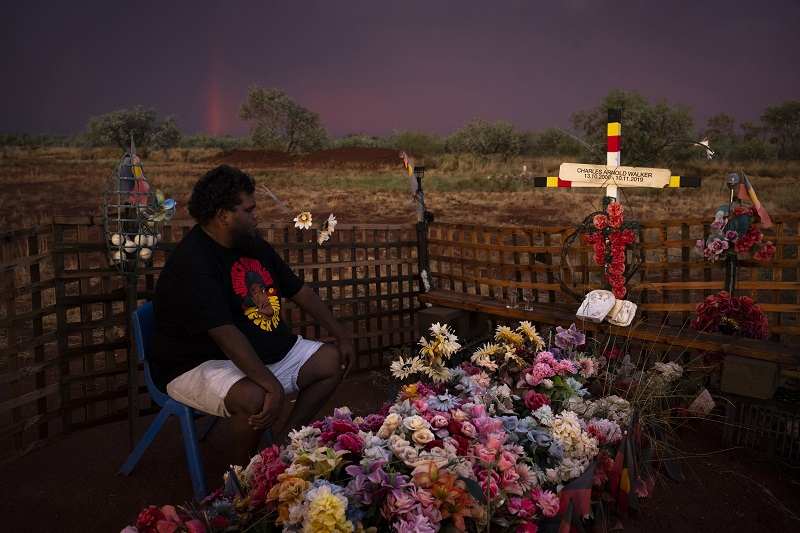
Max Kennedy visits Kumanjayi Walker’s grave on March 24 for the first time since the 2019 shooting.
On a stormy evening in late March, as the town’s power went out and children played in knee-high puddles, Kennedy went to Walker’s grave for the first time. He had been too angry to attend the funeral. But now, two weeks after Rolfe’s acquittal, the moment felt right.
As he stood next to the grave, covered with fading paper flowers and Aboriginal flags, Kennedy thought of the afternoons he’d spent playing video games with his cousin or teaching him to hunt. Then he thought of Walker dying in the station, surrounded not by his family but by police officers.
“If the police can do that, what protects us from the police?”
Lightning flashed on the horizon, somewhere near Coniston.
"News Services" POPULAR ARTICLE
-

American Playwright Jeremy O. Harris Arrested in Japan on Alleged Drug Smuggling
-

Japan’s Nikkei Stock Average as JGB Yields, Yen Rise on Rate-Hike Bets
-

Japan’s Nikkei Stock Average Licks Wounds after Selloff Sparked by BOJ Hike Bets (UPDATE 1)
-

Japan’s Nikkei Stock Average Buoyed by Stable Yen; SoftBank’s Slide Caps Gains (UPDATE 1)
-

Japanese Bond Yields Zoom, Stocks Slide as Rate Hike Looms
JN ACCESS RANKING
-

Keidanren Chairman Yoshinobu Tsutsui Visits Kashiwazaki-Kariwa Nuclear Power Plant; Inspects New Emergency Safety System
-

Imports of Rare Earths from China Facing Delays, May Be Caused by Deterioration of Japan-China Relations
-

University of Tokyo Professor Discusses Japanese Economic Security in Interview Ahead of Forum
-

Japan Pulls out of Vietnam Nuclear Project, Complicating Hanoi’s Power Plans
-

Govt Aims to Expand NISA Program Lineup, Abolish Age Restriction



















